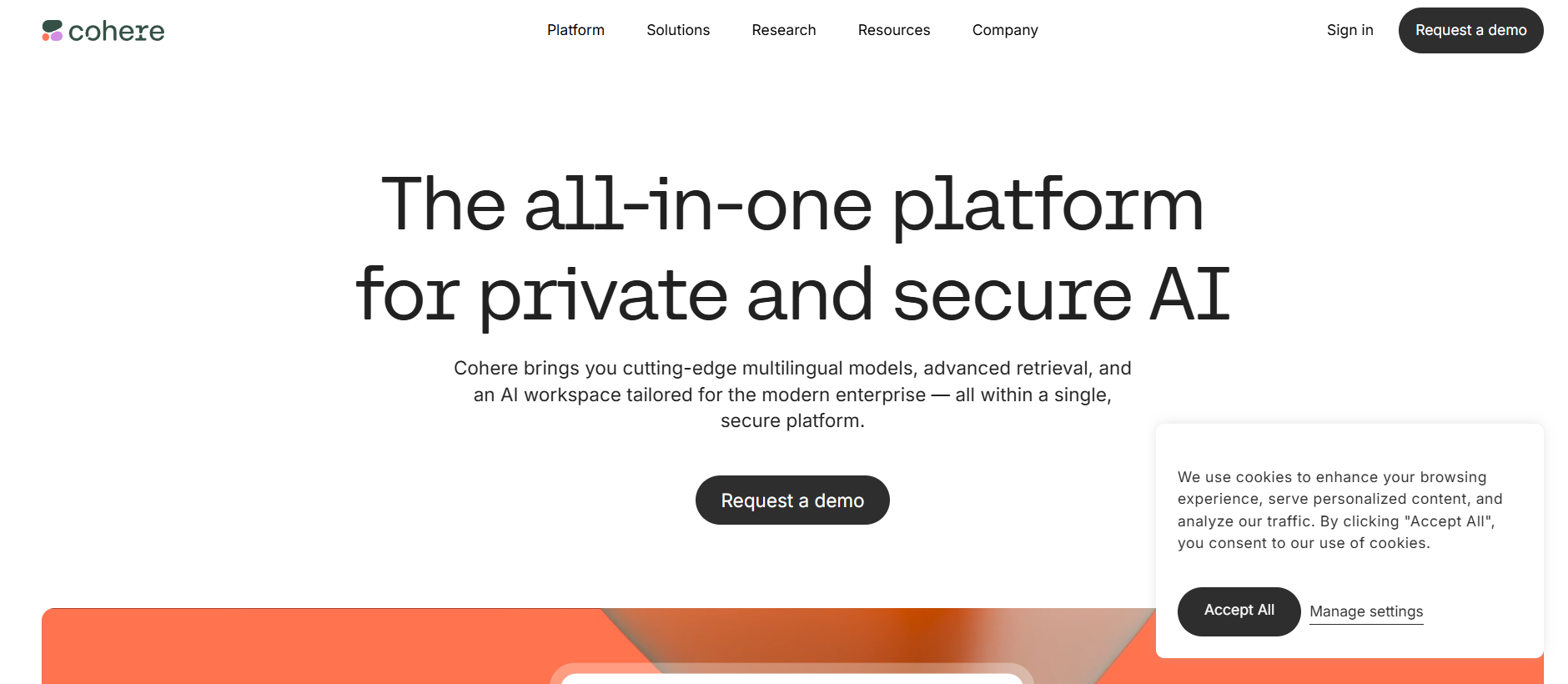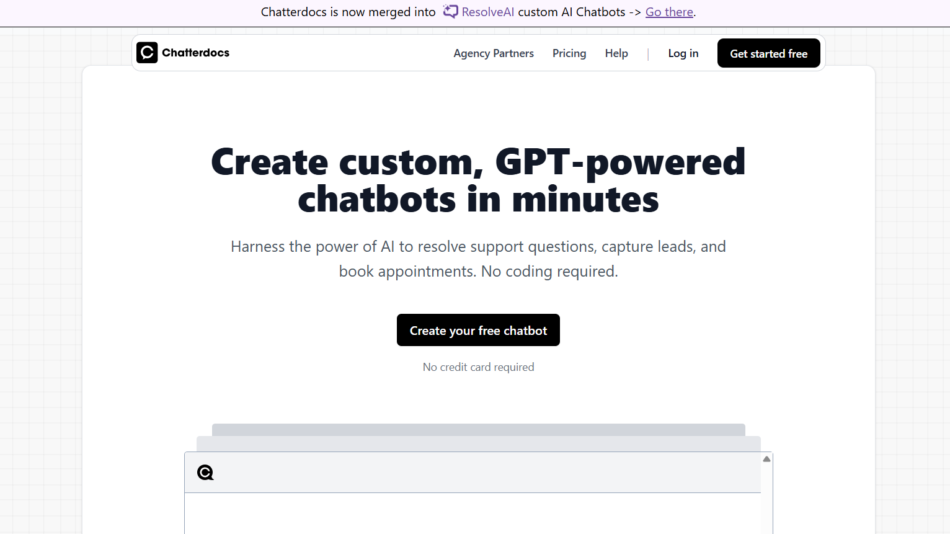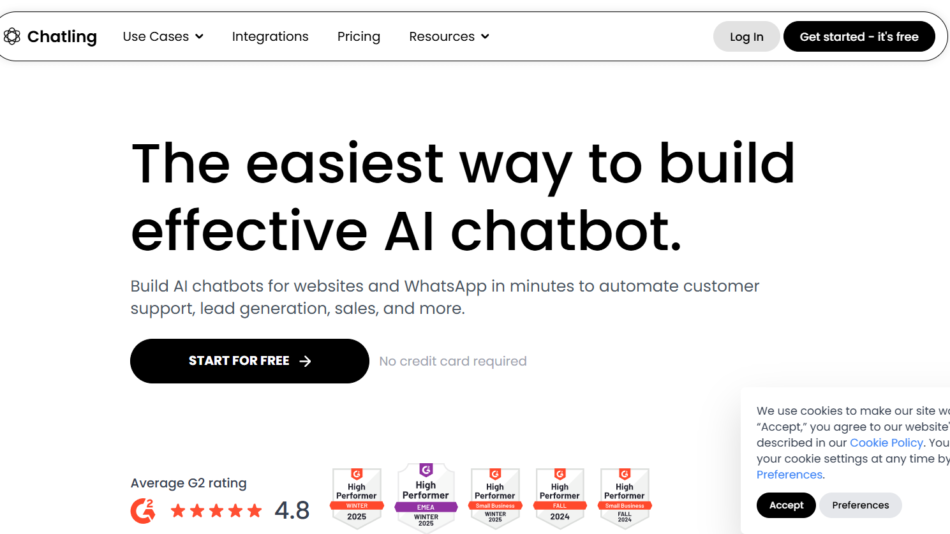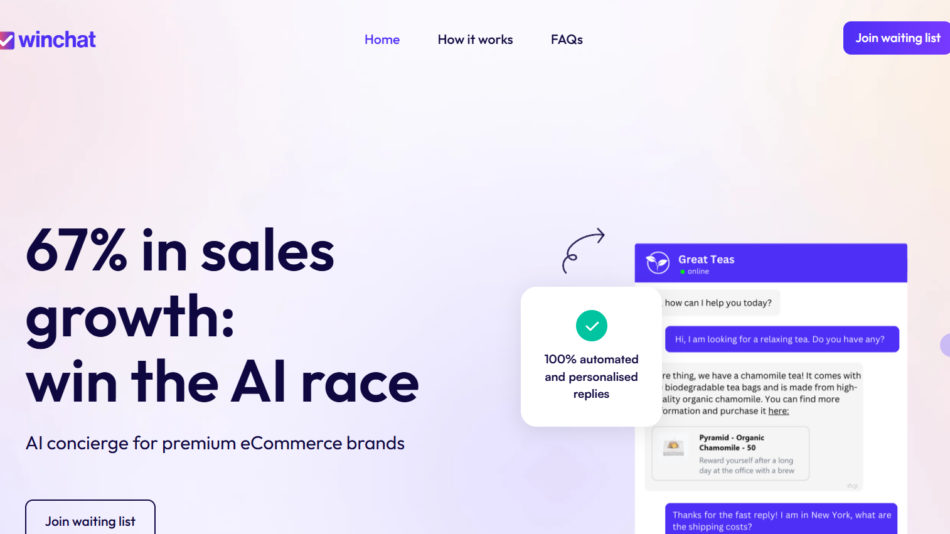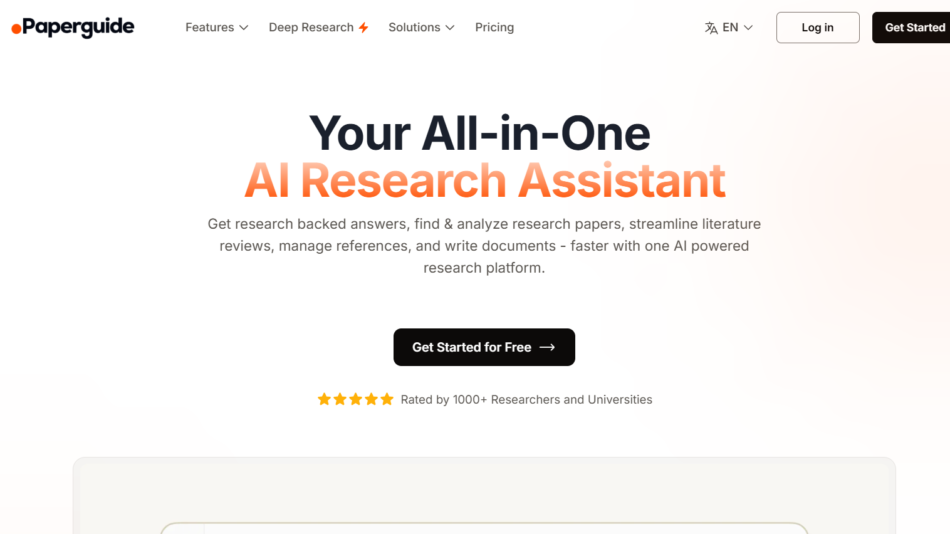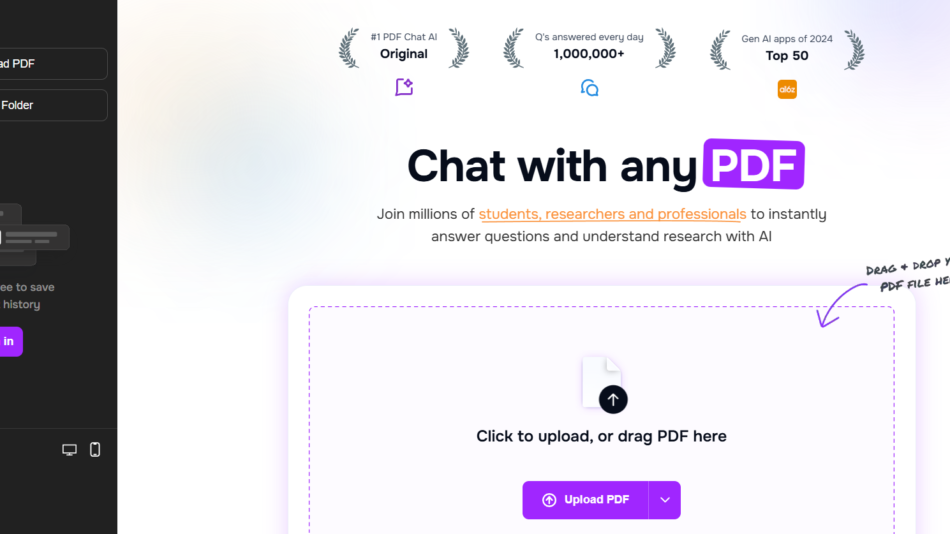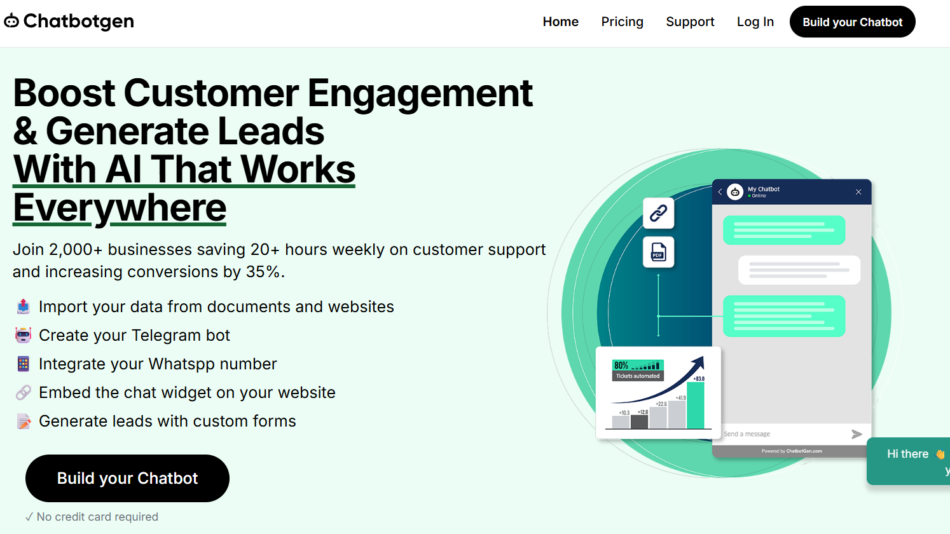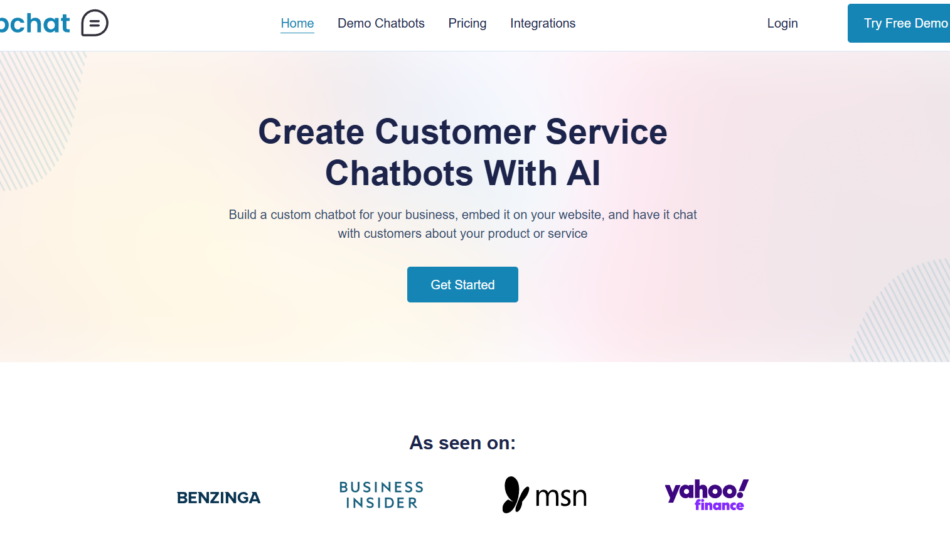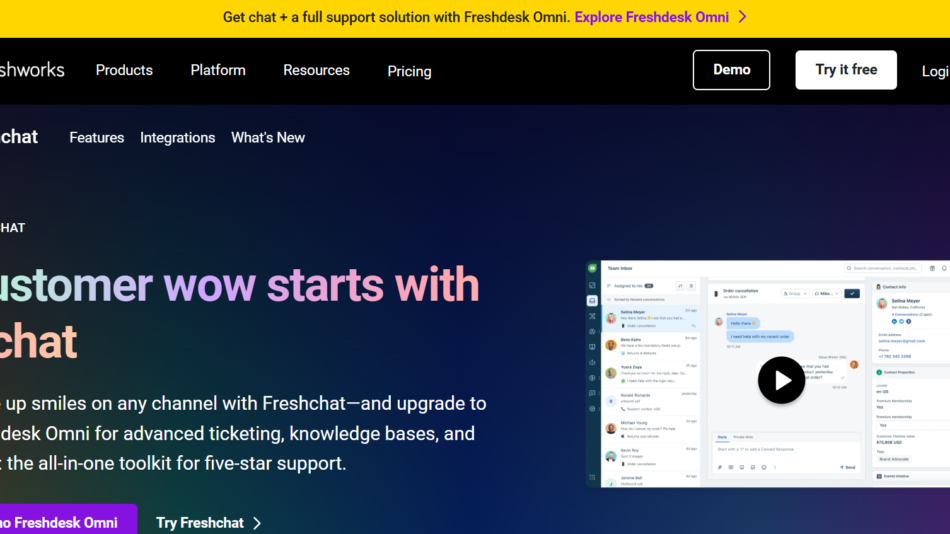Cohere is an enterprise-focused AI platform that enables organizations to build and deploy powerful natural language processing (NLP) applications using large language models (LLMs). It offers robust APIs and infrastructure for search, content generation, classification, and retrieval-augmented generation (RAG).
Known for its focus on data privacy, performance, and developer-friendliness, Cohere helps companies integrate advanced language capabilities into their products and workflows while maintaining control over their data. Unlike general-purpose AI tools, Cohere is purpose-built for production-scale environments where reliability, latency, and customization are critical.
Cohere’s proprietary models are available through cloud APIs, private cloud deployment, or on-premise infrastructure — giving businesses the flexibility to scale securely and compliantly.
Features
Cohere offers a suite of NLP capabilities through its API-first infrastructure:
Command R+ Models
State-of-the-art LLMs optimized for enterprise use cases, with high accuracy on RAG, summarization, question-answering, and extraction tasks.
Retrieval-Augmented Generation (RAG)
Combine LLMs with your proprietary data sources using Cohere’s retrieval engine, which improves factual accuracy and reduces hallucination.
Embedding Models
High-performance multilingual embedding models for search, clustering, recommendation, and semantic similarity tasks.
Search API
Build powerful internal or customer-facing semantic search tools using Cohere’s fast and scalable vector search.
Classify API
Automate decision-making, moderation, and content categorization with zero-shot or few-shot text classification.
Generate API
Use prompt-driven content generation for summarization, rewriting, question answering, and document synthesis.
Custom Training & Fine-Tuning
Tailor Cohere’s models to your specific domain or dataset using custom training workflows and API controls.
Multilingual Support
Serve global customers with embedding and generation capabilities across over 100 languages.
Flexible Deployment
Choose between hosted API, virtual private cloud (VPC), or full on-premise deployment to meet data governance needs.
Enterprise Support
SLA-backed support, security compliance, and access to dedicated solution engineers for deployment at scale.
How It Works
Cohere’s platform is built around a simple, developer-friendly API structure. After signing up for an account, developers receive API keys that enable access to Cohere’s pre-trained models and endpoints.
To use the generation model, you submit a prompt through the Generate API and receive a text response. For search and retrieval use cases, you first embed documents using the Embed API and store them in a vector database. The Search API then allows querying that data in real time.
RAG functionality combines document retrieval with Cohere’s LLMs for high-accuracy applications like chatbots, assistants, or document search. Businesses can also fine-tune models on proprietary data to improve domain specificity.
Integration is straightforward via SDKs in Python, Node.js, and other major languages. The platform supports REST APIs and Webhooks for full integration into modern development environments.
Use Cases
Enterprise Search
Build intelligent search systems across enterprise documentation, emails, and internal knowledge bases.
Customer Support
Automate ticket classification, response generation, and knowledge retrieval using RAG and LLM APIs.
Content Generation
Enable document summarization, rewriting, or report drafting for teams in marketing, legal, and operations.
Conversational AI
Power chatbots and virtual assistants with domain-specific understanding and accurate responses.
Risk and Compliance
Use classification models to detect sensitive content, flag policy violations, or monitor regulatory documents.
E-commerce
Deliver better product discovery, customer engagement, and search experiences with multilingual embeddings and personalization.
Education
Use RAG to create smart tutoring systems, personalized learning assistants, and content summarization tools.
Healthcare
Deploy on-premise AI models for secure summarization, intake triage, and document retrieval within regulatory environments.
Pricing
Cohere offers customized enterprise pricing tailored to each organization’s usage needs and deployment preferences. Pricing is generally based on:
– Model usage volume (number of tokens processed or queries)
– Type of deployment (hosted, VPC, or on-prem)
– Level of support and SLAs required
– Model customization or fine-tuning scope
For developers and small teams, Cohere provides a free tier to test basic functionality. To get exact pricing details, organizations can contact Cohere’s sales team through their official Contact page.
Strengths
Cohere is designed with the enterprise in mind. It delivers performance, privacy, and reliability that many general-purpose LLM platforms lack. The platform’s flexibility to run on VPC or on-premise gives it a significant advantage in regulated industries like finance, healthcare, and government.
Its support for multilingual NLP and high-performance embeddings positions Cohere as a top choice for global applications. The developer-friendly APIs and strong documentation also make it easy to integrate and scale.
The RAG capabilities — critical for enterprise AI applications that must reference real knowledge — are state-of-the-art and optimized for low-latency inference.
Drawbacks
Cohere is less focused on the casual or hobbyist user and is better suited for developers or teams with technical expertise. Its platform is not intended for drag-and-drop chatbot builders or no-code environments.
Because pricing is not publicly disclosed, smaller organizations may find it difficult to estimate costs upfront. Some features like fine-tuning require direct collaboration with Cohere’s team, which might not suit users looking for a completely self-service solution.
The platform is also heavily API-based, meaning less visual interface support for users unfamiliar with development tools.
Comparison with Other Tools
Compared to OpenAI, Cohere emphasizes enterprise use cases, flexible deployment, and control over data. While OpenAI offers fine-tuning and APIs, Cohere’s support for private deployments (like on-prem) and dedicated embedding APIs makes it better suited for regulated or private-sector environments.
Versus Anthropic (Claude) or Mistral, Cohere offers more extensive RAG infrastructure, semantic search, and a stronger focus on vector embeddings. Tools like Pinecone or Weaviate specialize in vector databases, but Cohere combines LLMs with vector tools natively.
For companies focused on production-scale NLP, Cohere offers a more comprehensive and controllable stack than consumer-facing platforms like ChatGPT or Claude.
Customer Reviews and Testimonials
Cohere is widely used by leading enterprises and AI teams, including startups and Fortune 500 companies. Public feedback highlights its reliability, responsive support team, and enterprise-grade security as major strengths.
Developers praise the simplicity of the API and the quality of the embeddings for search-related use cases. Several companies have shared that switching to Cohere improved their AI system’s latency and output accuracy while complying with internal data governance policies.
Industry use cases in legal tech, financial services, and internal analytics have shown how Cohere helps operationalize LLMs responsibly and securely.
Conclusion
Cohere stands out as a powerful, enterprise-grade AI platform for natural language processing and retrieval-augmented generation. With secure deployments, high-performance models, and robust APIs, it empowers businesses to build intelligent language applications while retaining full control over their data.
Whether you’re developing search tools, chatbots, summarization systems, or classification engines, Cohere provides the infrastructure to scale reliably. Its developer-first approach, multilingual support, and focus on production environments make it a strong contender for enterprises looking to deploy AI that works with their real-world data and constraints.
